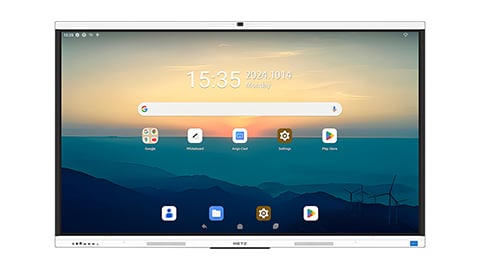Igniting Engagement: The Power of Interactive Displays for Education
Interactive displays captivate students' attention and foster active participation. By incorporating interactive elements, such as touchscreens, stylus pens, and gesture recognition, educators can create dynamic and immersive learning experiences. Interactive displays enable students to directly interact with educational content, encouraging exploration, experimentation, and critical thinking. This heightened engagement leads to improved knowledge retention and a more enjoyable learning process.
Collaboration Unleashed: Promoting Interactive Learning with Interactive Displays for Education
Interactive displays facilitate collaborative learning by breaking down barriers and encouraging student interaction. With features like split-screen functionalities and collaborative software, students can work together on group projects, presentations, and problem-solving activities. This collaborative approach nurtures teamwork, communication, and peer-to-peer learning, preparing students for real-world collaborative environments.
Rich Multimedia Experiences: Delivering Engaging Content with Interactive Displays for Education
Interactive displays enable educators to deliver content in engaging and multimedia-rich formats. Teachers can incorporate videos, animations, interactive quizzes, and virtual simulations to enhance the learning experience. With the ability to integrate various educational software and platforms, interactive displays offer endless possibilities for creating dynamic and interactive lessons that cater to diverse learning styles.
Assessing Interactively: Leveraging Interactive Displays for Education
Interactive displays revolutionize the assessment process by providing interactive and real-time feedback. Educators can design interactive quizzes, surveys, and polls that allow students to actively participate in assessments. This immediate feedback fosters self-assessment and facilitates personalized learning paths. Moreover, interactive displays enable educators to track students' progress, identify areas of improvement, and tailor instruction accordingly.
Dynamic Learning Environments: Creating Immersive Experiences with Interactive Displays for Education
Interactive displays transform traditional classrooms into dynamic learning environments. The integration of interactive displays, combined with digital resources and educational tools, creates an immersive and technology-rich setting. This environment promotes creativity, critical thinking, and problem-solving skills, preparing students for the digital age and future careers.
Conclusion
Interactive displays have emerged as a game-changer in education, revolutionizing the way students learn and engage with educational content. By enhancing student engagement, promoting collaboration, delivering multimedia-rich content, enabling interactive assessments, and creating dynamic learning environm
ents, interactive displays have the power to transform traditional classrooms into hubs of active learning and exploration. Embrace the potential of interactive displays for education and unlock new possibilities for student success in the digital era.






